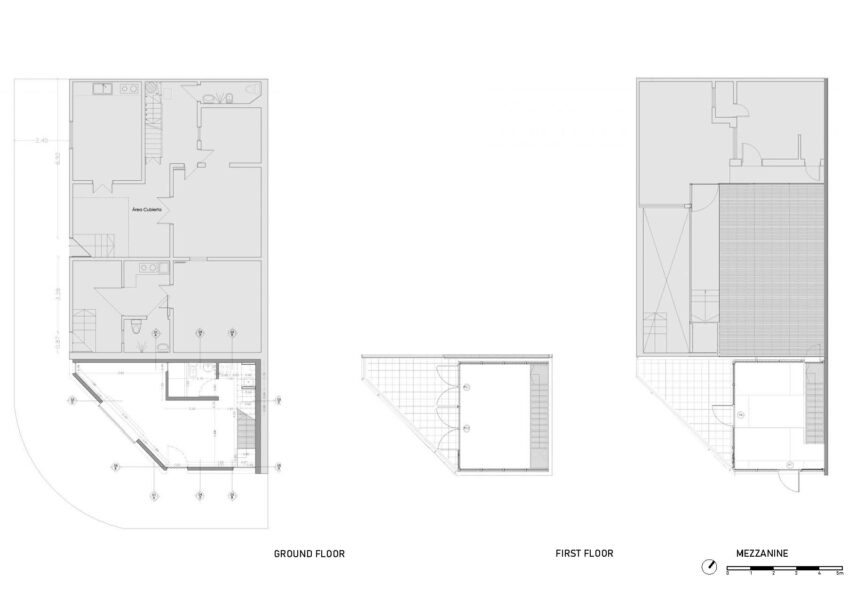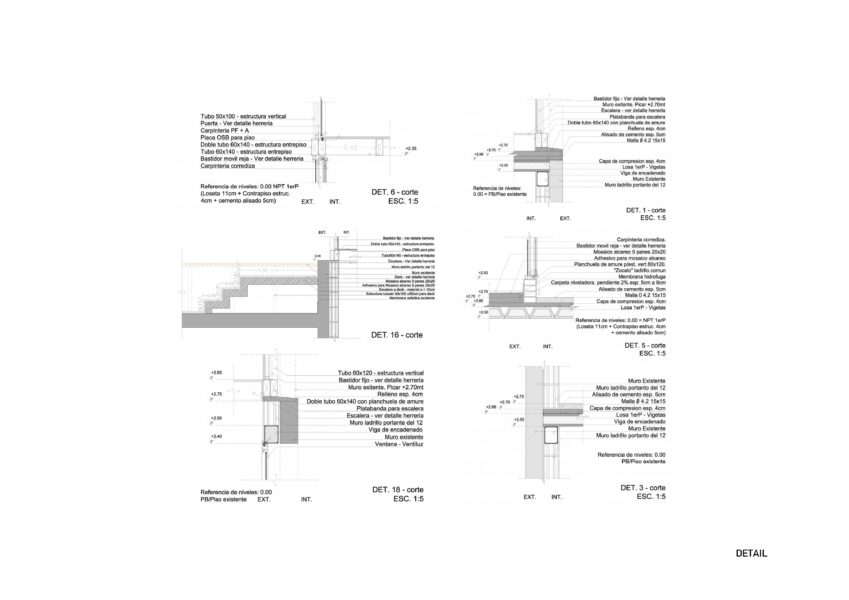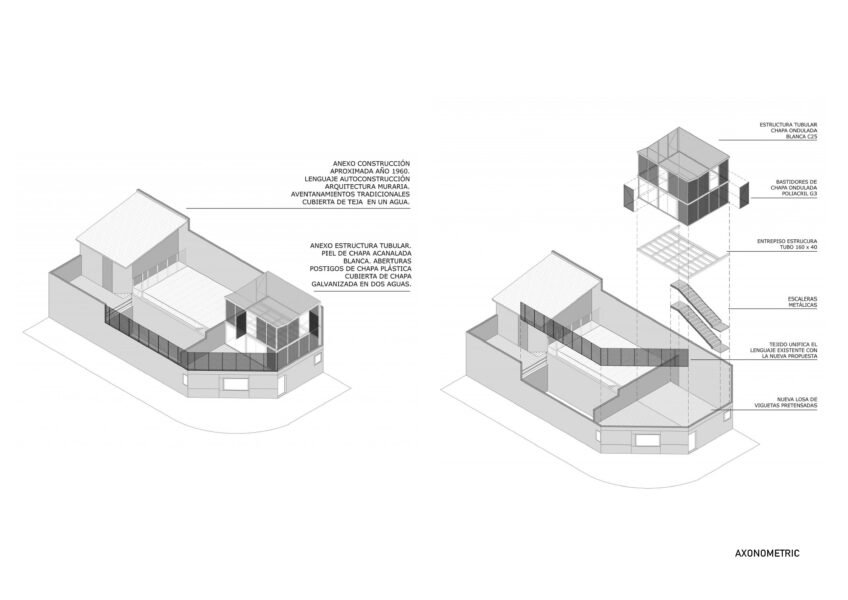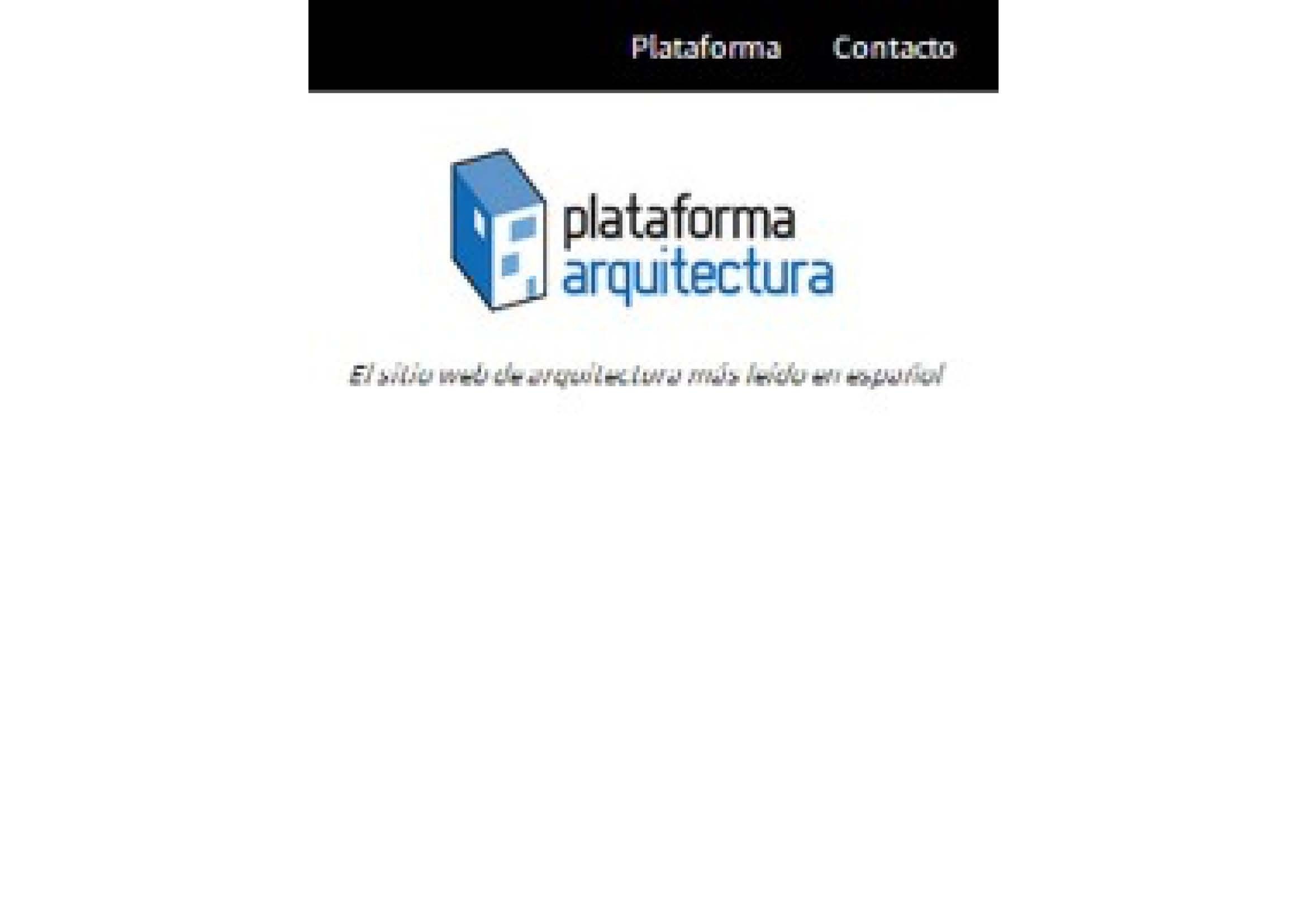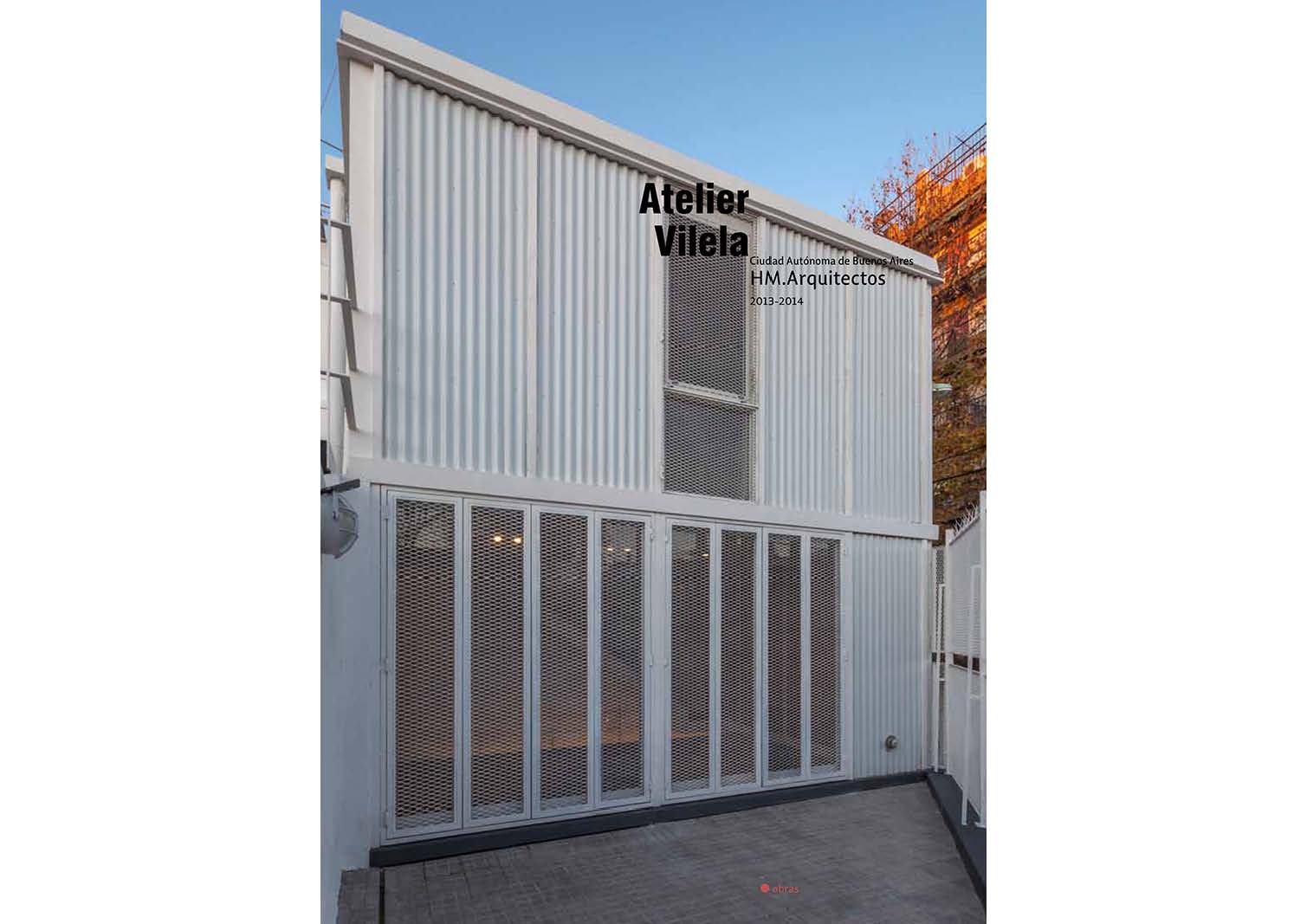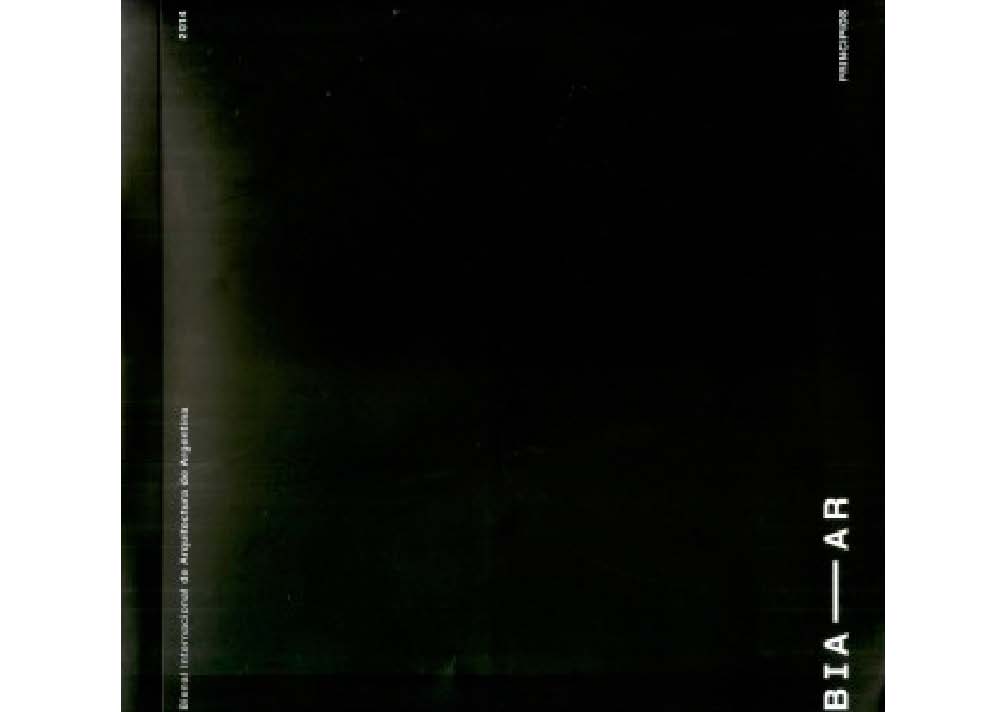The first level is constructed with pre-stressed beams and the second level with a tubular structure about 100×50 reproducing a modulation which is displayed on the facade as well. The openings and protection systems strictly respond to modulation of the new intervention, totally opposed to the old house, whose openings have no projective logic. The intervention of only 66 m2 covered was not constrained to the corner unit, it also had to solve an expansion on an old zinc roof over the adjoining unit. In this way and through an lightweight tubular structure that supports a wide wooden deck we achieved an exterior expansion of the project which is accessed from the second level. As if trying to recall the ancient craft practiced there, the destiny of the new intervention is a practical space for arts and crafts. The idea is to develop activities such as classes of jewelry, carpentry, etc. mostly on ground floor and first level, while in the upper level will take place, physical activities, yoga and meditation.
